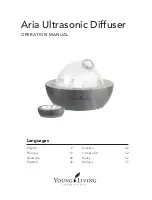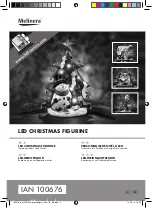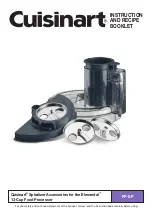
1 Significant Features and Requirements
1-1 F3SS General Description
1
1 Significant Features and Requirements
1-1 F3SS General Description
The F3SS single safety light beam is a general purpose presence sensing device. The F3SS is designed spe-
cifically for whole body detection and must not be used for point of operation guarding.
1-2 Meeting Full Compliance
Whether a specific machine application and F3SS installation meets full compliance with safety regulations de-
pends on several items, including the proper application, installation, maintenance and operation of the F3SS.
These items are the sole responsibility of the purchaser, installer and employer.
1-3 Employer Responsibilities
The employer is also responsible for the selection and training of the personnel necessary to properly install,
operate and maintain the machine and its safeguarding systems. The F3SS must only be installed, checked out
and maintained by a qualified person, as “a person or persons who, by possession of a recognized degree or
certificate of professional training, or who, by extensive knowledge, training or experience, has successfully
demonstrated the ability to solve problems relating to the subject matter and work.” (ANSI B30.2-1983)
The machine operator must notify management if the machine, tooling or safety devices are not operating prop-
erly. Never use the machine if it is not in proper working order.
1-3-1 Additional Requirements
The following is a list of additional requirements you must meet before using the F3SS safety light beam.
• Never use the F3SS for point of operation guarding.
• The machine on which the F3SS is installed must be capable of stopping motion anywhere in its stroke or
cycle. Do not use the F3SS on a power press with a full-revolution clutch. This product cannot be used in
Japan as a safety device for pressing or shearing machines provided by article 42 of that law.
• The F3SS does not offer protection from flying objects.
• Do not use the F3SS on any device with inconsistent stopping time or inadequate control devices or
mechanisms.
• Do not use the F3SS where the environment, such as severe smoke, particulate matter, or corrosive
chemicals, may degrade the efficiency of the F3SS.
• When the F3SS is utilized as a safety device, the employer has the responsibility to ensure that all applicable
national, federal, state and local rules, codes and regulations are satisfied.
• All safety-related machine control circuit elements, including pneumatic, electric or hydraulic controls must
be control reliable. Control reliable is defined as: “...the device, system or interface shall be designed,
constructed and installed such that a single component failure within the device, interface or system shall
not prevent normal stopping action from taking place, but shall prevent a successive machine cycle...”
• Additional guarding such as mechanical guards may be required if the F3SS does not protect all points of
entry into the hazardous area.
• All brakes and other stopping mechanisms and controls must be in proper working order. If the machine stop
mechanisms and associated controls are not working properly, the machine may not stop safely even though
the F3SS is functioning properly.
• The test procedures must be performed after any maintenance is performed on the machine controls or the
F3SS. The test procedure (Appendix A) is contained in this manual. The user must perform (at least every
three months, more often with continuous use) the preventive maintenance procedures recommended in this
manual.
• Do not perform any test or repairs other than those outlined in this manual. All electrical wiring must be
installed in accordance with local electrical codes and regulations.
• The user must follow all procedures in this manual for proper operation of the F3SS.
• The enforcement of these requirements is beyond OMRON’s control. The employer has the sole
responsibility to follow the preceding requirements and any other procedures, conditions and requirements
specific to his machinery.
Summary of Contents for F3SS
Page 4: ......






































